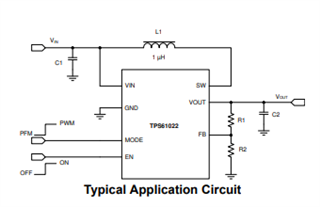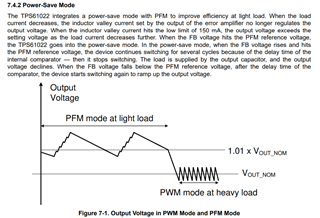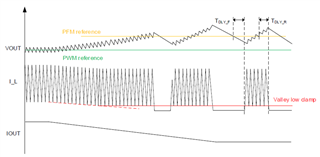Hi team,
My customer has some question about TPS61022, please see below.
1.) For Pin 6, when this pin pull low, the device always work at PWM mode, when this pin pull high, the device will operate PFM mode at light load, but the normal load will operate PWM mode, do I understand right?

2.) Could PFM mode improve the EMI?
3.) I don't not very understand 1.01* Vout_nom, could you give me an example? 
4.) In the shutdown mode, the device is entirely turned off. The output is disconnected from input power supply. which mean there is no leakage current in there right?
Jason





